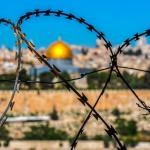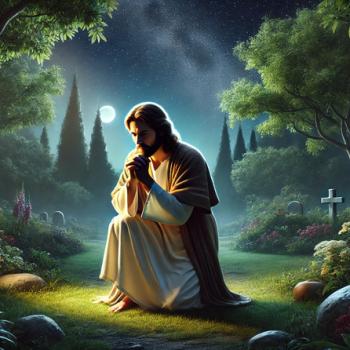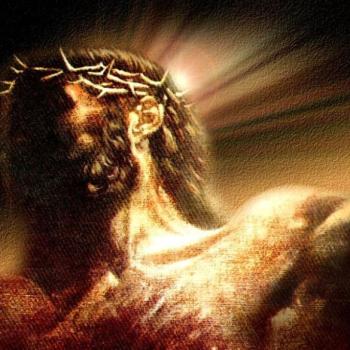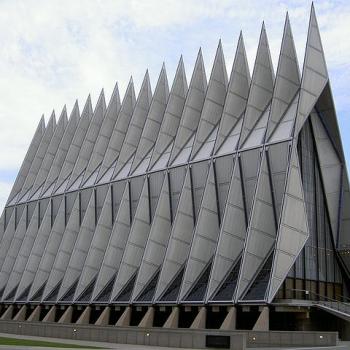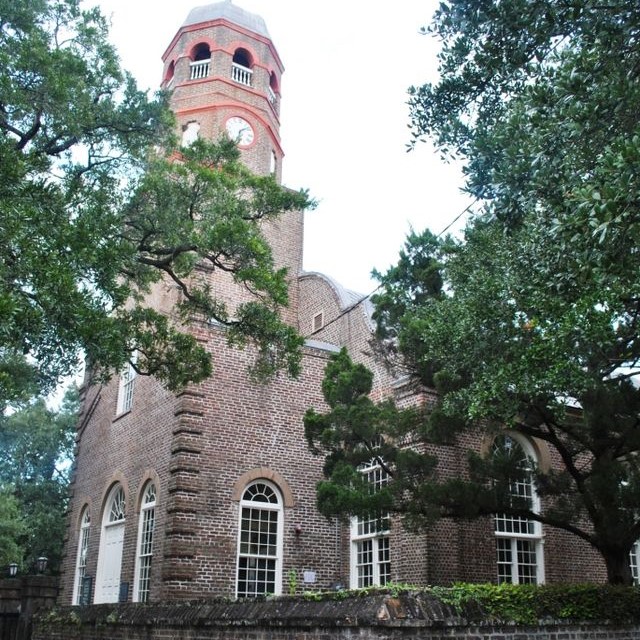
The Church’s Name
The name of the church consists of two parts. The first, Prince George, gave a nod to England’s Prince George who ultimately became King George II of England. For Americans, this prince’s claim to fame may be as the grandfather of King George III, the ruler of England during the Revolutionary War.
The second part of the church’s name, Winyah, refers to Winyah Bay, a water body on which Georgetown sits. This bay is a coastal estuary where four rivers—the Black, Pee Dee, Sampit, and Waccamaw—come together.
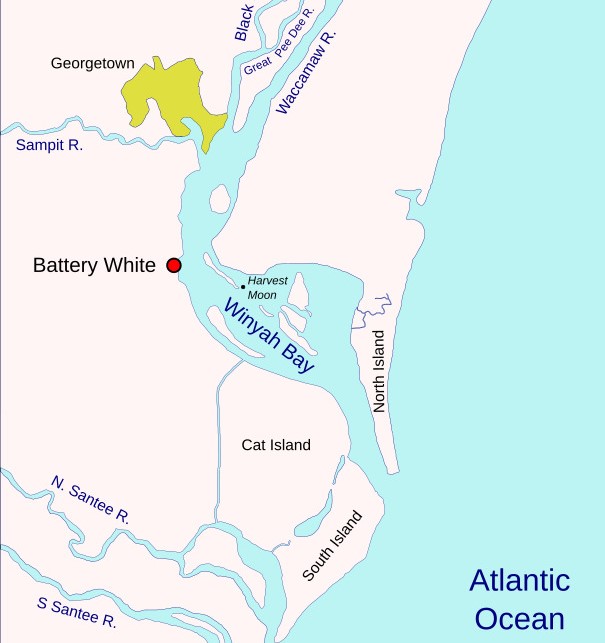
Georgetown’s Location and History
The historic port of Georgetown, South Carolina provides a lovely setting for Prince George Winyah Parish Church. Georgetown, the county seat of Georgetown County boasts the second largest port in South Carolina. Founded in 1729, Georgetown sits in the heart of South Carolina’s Lowcountry, a geographic area containing significant coastal waterways and salt marshes.
English colonists came to the area in the 1600’s and experienced successful trade with the Indians. When that trade declined, plantation owners turned to raising indigo and rice in the 1700s and 1800s. Georgetown County exported so much rice that it became the richest county in the United States at one point. Georgetown planter Thomas Lynch, Jr. even served as one of the signers of the Declaration of Independence.
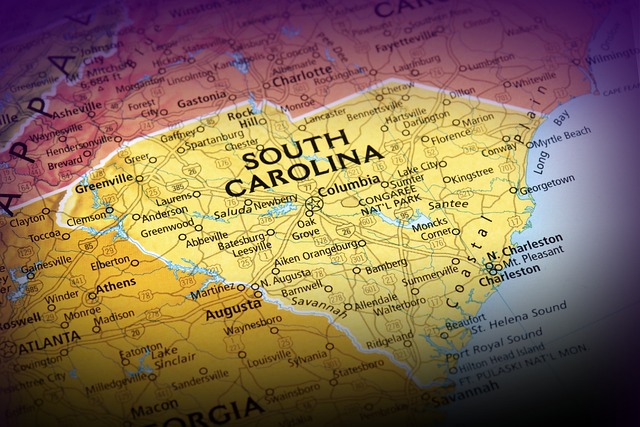
The Church Building
The year 1775 saw completion of the church building’s construction. Construction materials included English red brick held together with local oyster-shell mortar, flagstone for the flooring, and heart pine for the pews. A wine-glass shaped pulpit sat in the front of the sanctuary. Although colonial churches did not install stained glass windows, Prince George Winyah Church still contains four hand-blown glass windows along with several original panes of glass.
Raised panel box pews offered seating for parishioners. Consisting of a bench within wooden walls, these pews provided an enclosed area for seating during church services. A hinged door allowed access to the pew’s interior. Colonial churches customarily contained boxed pews. Families or parishioners would rent or purchase these boxes, providing funds for the church.
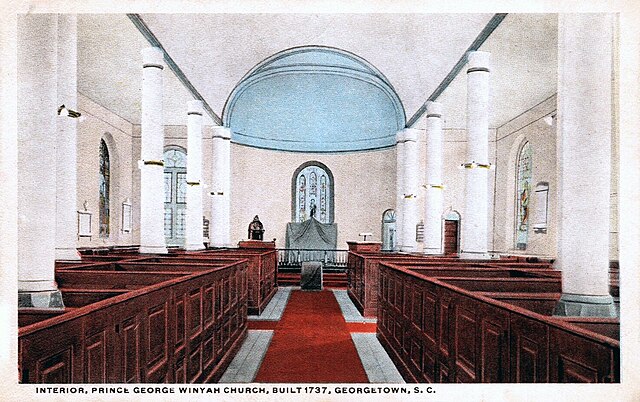
An arcaded belfry with a cupola rises over the exterior of the church building. It looks down on the church’s graveyard just outside the building. A wall of handmade brick surrounds the church’s cemetery.
The old cemetery holds the graves of several prominent early South Carolinians, including Gabriel Marion, father of the “Swamp Fox,” Gen. Francis Marion. It also contains the final resting place of Gov. Robert Allston, a governor of South Carolina during the 1800s.
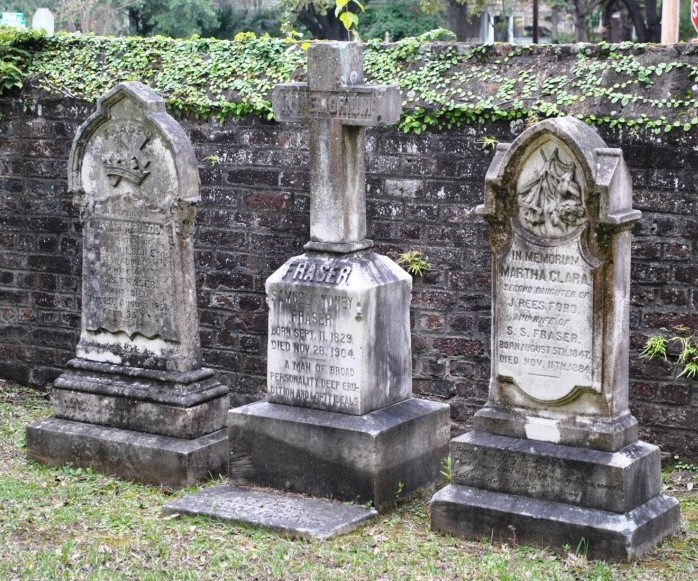
During war, opposing soldiers showed no respect for Prince George Winyah Church. During both the Revolutionary War and the Civil War, the military desecrated the church building.
In June 1780, Georgetown fell to the British. The foreign army occupied the church building and stabled their horses inside it. But in 1781, Gen. Francis Marion approached to take on the British. Before the British soldiers fled, they burned the church’s interior, including its wine-glass pulpit. Soldiers customarily burned buildings they vacated in the face of defeat.
Soldiers again occupied the church during the War Between the States. This time US soldiers, rather than a foreign army, took over the building.
Historical Importance
Existing prior to formation of the United States of America and continuing in service to the present, Prince George Winyah Church has been a part of American history as it was made. Perhaps that history was a bit too up close and personal with the British stabling horses inside it though. In recognition of the church’s historical significance, Prince George Winyah (Anglican) and Churchyard was named to the National Register of Historic Places in May 1971.
Family History
Prince George Winyah Church holds a part in American history, but it also played a part in my family’s history. My mother grew up in Georgetown and attended that church. She married my father there in the same building where British soldiers stabled horses. My family attended services at Prince George Winyah during our summer vacations in South Carolina. My parents’ ashes are even interred in the same churchyard as the Swamp Fox’s father. Our family story is intertwined with American history through the South Carolina church active before the Revolutionary War.



